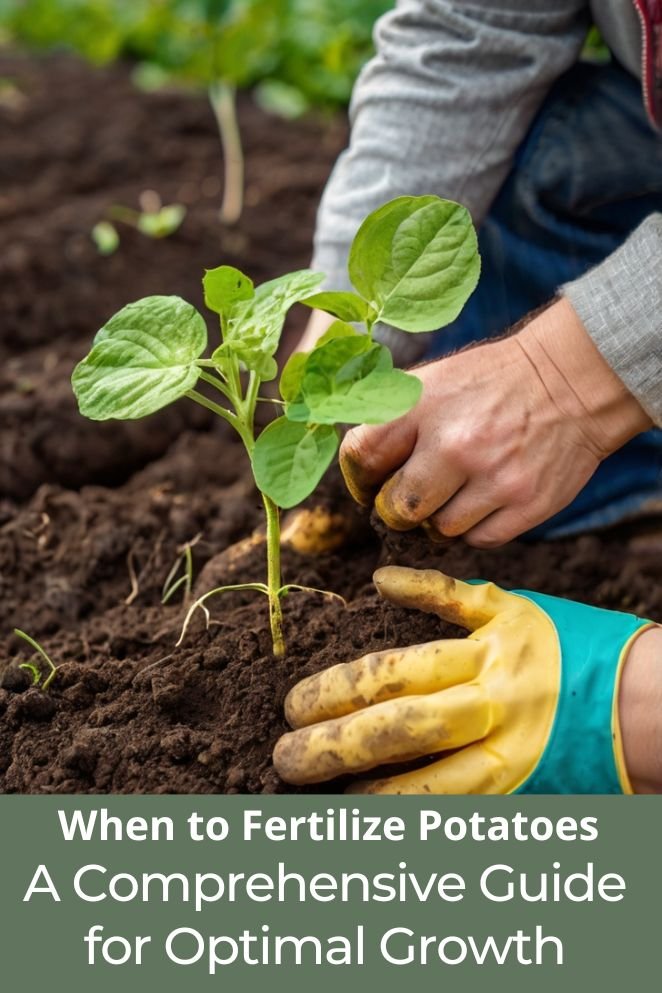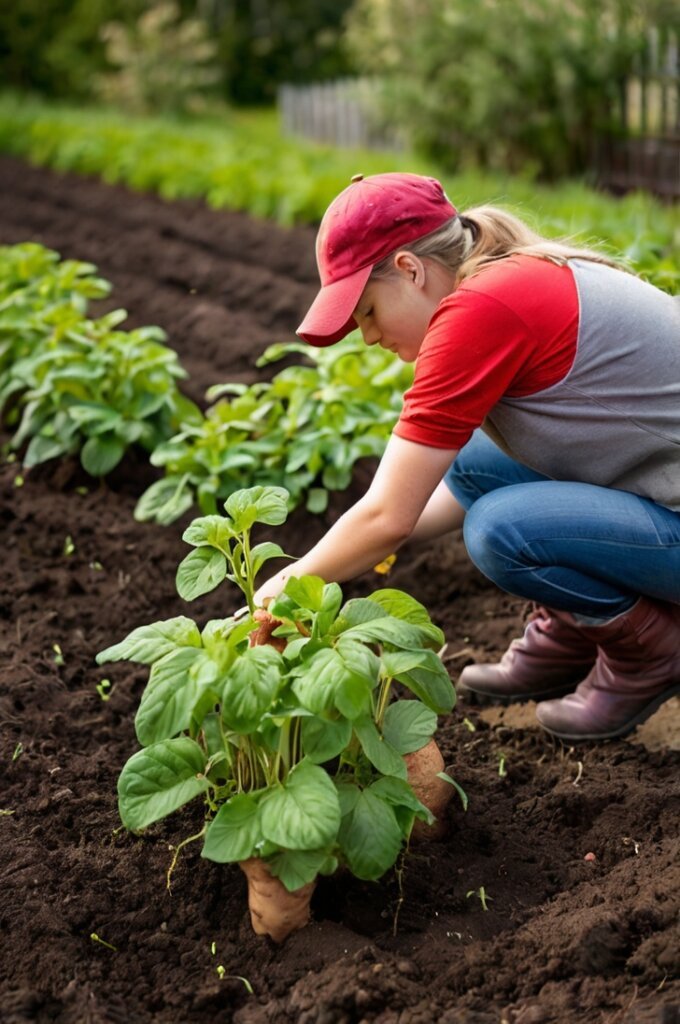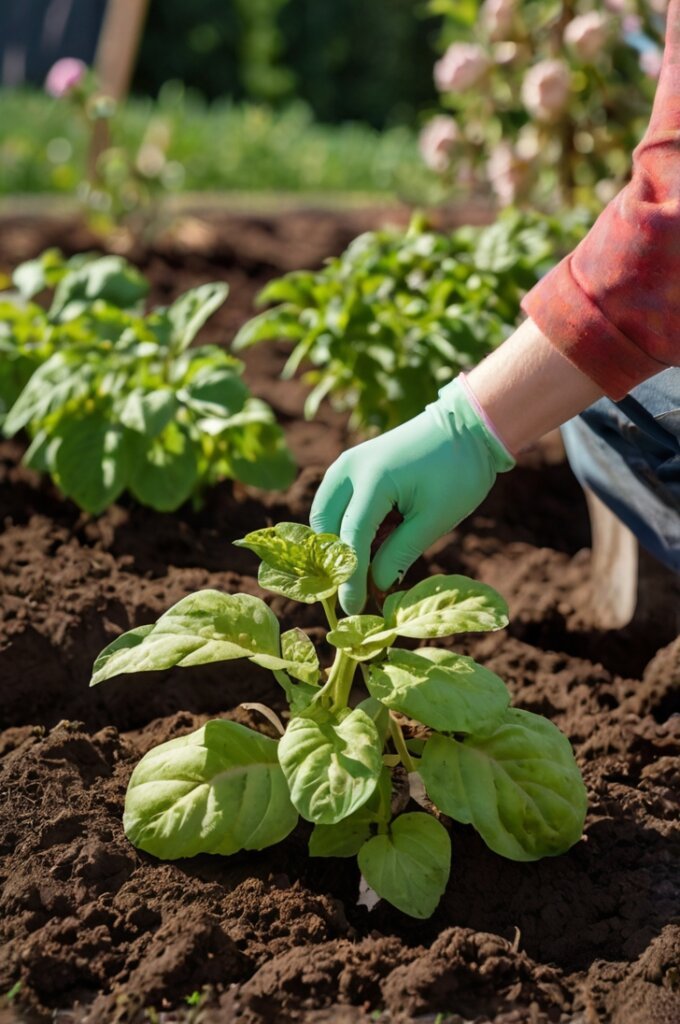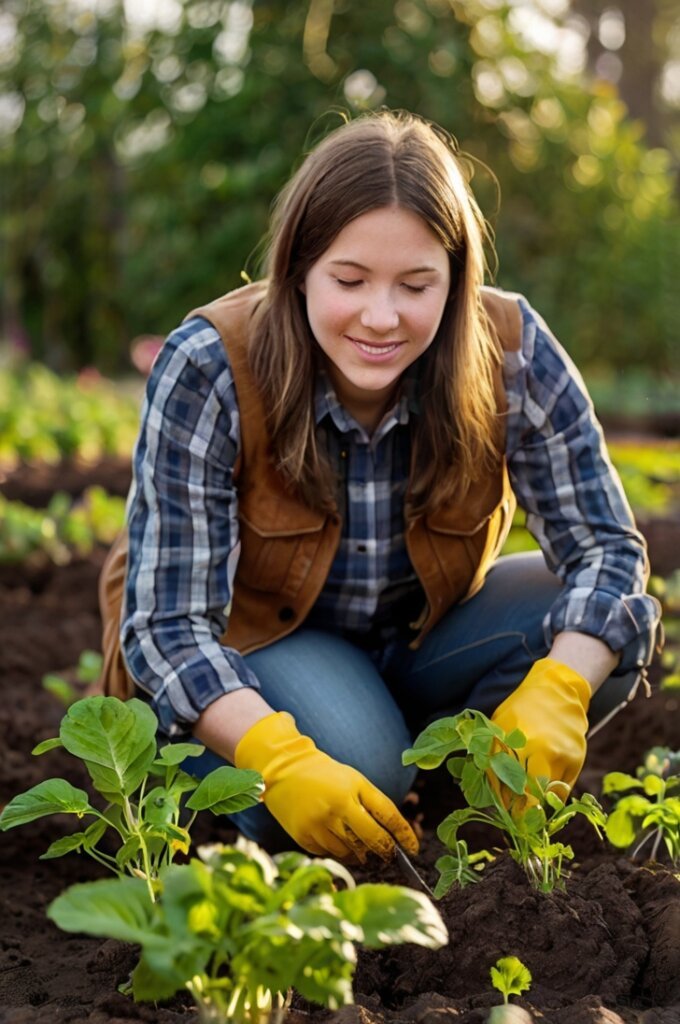
When to Fertilize Potatoes is a crucial aspect of potato cultivation that directly impacts yield and quality.
Proper timing of fertilizer application is essential for optimal plant growth and nutrient uptake.
By understanding key elements like ideal fertilization for potatoes, when and how to fertilize potatoes, growers can maximize their potato production and produce high-quality tubers.
The Most Suitable Fertilizer for Potatoes
Before you begin fertilizing your potato plants, selecting the right fertilizer is crucial for their growth and overall health.
Potatoes need a balanced mix of nutrients to thrive, and understanding the roles of key nutrients will help you make the best choice.
Below are some essential nutrients and the types of fertilizers that provide them.
Essential nutrients
Nitrogen (N)
Nitrogen is vital for the development of lush, green foliage.
It helps the plant produce chlorophyll, which is essential for photosynthesis.
While nitrogen is crucial, too much of it can lead to excessive leaf growth at the expense of tuber formation.
This can result in a plant that looks healthy on the surface but produces fewer potatoes underground.
Opt for a fertilizer that provides nitrogen but is not overly rich in this nutrient.
This helps balance foliage growth with tuber production.
- Read also: The Ultimate Guide to Hilling Potatoes in Raised Beds
- Read also: The Ultimate Foe: Common Potato Pests and How to Defeat Them
Phosphorus (P)
Phosphorus plays a key role in root development and is especially important for the formation of healthy tubers.
It aids in energy transfer and strengthens the plant’s ability to store and utilize nutrients.
Choose a fertilizer with a balanced phosphorus content to support robust root systems and optimal potato yield.
Potassium (K)
Potassium is essential for overall plant health, as it regulates water movement within the plant, enhances disease resistance, and improves tuber quality.
Adequate potassium helps your potatoes resist diseases, tolerate stress from drought, and produce firmer, more nutrient-rich tubers. A
fertilizer with sufficient potassium will ensure your plants are hardy and the tubers develop well.

Nutrient balance
Potatoes require a balanced mix of nitrogen (N), phosphorus (P), and potassium (K) for optimal growth.
However, the ratio of these nutrients should vary depending on the growth stage:
- Early growth: Higher phosphorus for root development and early vigor.
- Tuber formation: Higher potassium for tuber quality, stress resistance, and disease resilience.
- Vegetative growth: Higher nitrogen for lush foliage and a sturdy canopy
Additional fertilizer
It is important to enrich the soil by adding organic matter like:
- Compost: Compost is an excellent organic option, providing a slow-release source of nutrients. It improves soil structure, retains moisture, and adds organic matter, which enhances the soil’s fertility over time.
- Well-rotted manure: Manure adds valuable nutrients to the soil and improves its texture. It’s particularly beneficial for maintaining soil moisture and promoting healthy microbial activity, which is essential for nutrient uptake by the plants.
As the growing season progresses and potato plants begin to form tubers, an extra boost of nutrients can be beneficial.
Adding a layer of organic matter around the base of the plants (side-dressing) can help support healthy growth and tuber development.
When to Fertilize Potatoes
Proper timing is essential when fertilizing potatoes to ensure they receive the nutrients they need at the right stages of growth.
By following a well-timed fertilization schedule, you can maximize your potato yield and promote healthy plants.
Here’s a detailed timeline to guide you through the fertilization process:
Before planting
To give your potato plants a strong start, it’s important to enrich the soil before planting.
Incorporating a balanced fertilizer and organic matter into the soil provides essential nutrients that young plants need to thrive.
Begin by preparing your soil well in advance of planting, about 2 to 4 weeks before planting your seed potatoes.
Incorporate the fertilizer or compost into the top 6-8 inches of soil.
This depth ensures that the nutrients are well-distributed where the young potato plants will develop their root systems.
At planting
When it’s time to plant your seed potatoes, dig a trench or hole and mix a small amount of fertilizer or compost directly into the planting area.
Be sure to place the seed potatoes on top of the fertilized soil, not in direct contact with the fertilizer, to avoid potential burning of the young roots.
Fertilizing at planting ensures that the developing roots have immediate access to nutrients.
This early access helps the plants establish themselves quickly and promotes vigorous growth.
Use a light hand with fertilizer at this stage, as too much can harm the tender young roots.
A balanced, slow-release fertilizer or well-rotted compost is ideal for providing a steady supply of nutrients.

During the growing cycle
After planting, wait until the plants are about 6 to 8 inches tall, which is usually around four weeks after planting.
It’s time to apply a side-dressing of fertilizer.
This involves spreading fertilizer along the sides of the plants, near the base, but not directly touching the stems.
Use a balanced fertilizer or compost, and carefully spread it around the base of each plant.
Gently work the fertilizer into the soil with a hoe or rake, being cautious not to disturb the plants’ roots.
At this stage, the plants are entering a critical growth phase where they need additional nutrients to support both foliage and tuber development.
Side-dressing provides a nutrient boost that helps the plants continue growing strong.
At mid season
Around mid-season, typically when your potato plants begin to flower, it’s time for the final round of fertilization.
This is crucial for supporting tuber formation, as flowering indicates that the plants are beginning to produce potatoes underground.
Choose a balanced fertilizer or one that is slightly higher in potassium to support tuber development and overall plant health.
Potassium is particularly important at this stage for improving the size and quality of the potatoes.
Apply the fertilizer in the same manner as the side-dressing, ensuring that it is spread evenly around the base of the plants and lightly worked into the soil.
Fertilizing during flowering ensures that the plants have the energy and nutrients they need during the most critical phase of potato production.
This step can significantly impact the size and quality of your harvest.
A sign that it’s time to stop is when the potato foliage starts to turn yellow.

- Read also: Spudtacular Sprouts: The Ultimate DIY Potato Grow Bag Guide
- Read also: The Ultimate Guide to Companion Plant for Luscious Potatoes
Useful Tips for Successful Fertilization
Fertilizing your plants effectively is key to achieving a bountiful harvest and maintaining soil health.
Below are some detailed tips to help you succeed in your fertilization efforts:
- Soil testing: Conduct a soil test before planting to determine nutrient levels and pH. This will help you choose the right fertilizer and avoid over-application.
- Avoid over-fertilizing: Too much fertilizer can harm your plants and the environment. Follow recommended rates and avoid applying more than needed.
- Watering: After applying fertilizer, water the plants thoroughly. This helps dissolve the nutrients and makes them available to the roots.
- Proper tools: Use the right tools for application, such as a spreader for broadcasting or a sprayer for foliar feeding, to ensure even distribution and effectiveness.
- Record keeping: Keep a record of your fertilization practices, including the type of fertilizer used, application rates, and timing. This helps you track what works best for your garden and make adjustments as needed.
Conclusion
Fertilizing potatoes is a key step in ensuring a healthy and bountiful harvest.
By choosing the right fertilizer, timing your applications correctly, and using effective techniques, you can support robust growth and maximize your yield.
Remember to test your soil, follow application guidelines, and adjust based on your plants’ needs.
With these practices, your potato crop will be on its way to thriving in no time.



